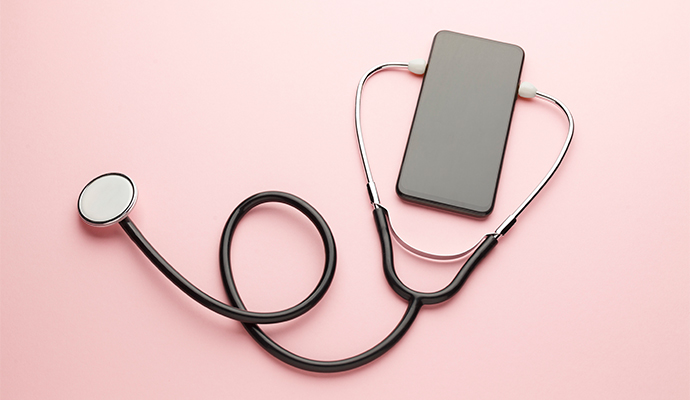Audio-Only Remote Patient Monitoring Boosts Access for Black Patients
When given the option, Black patients with COVID-19 were more likely to choose a telephone-based remote patient monitoring program over an application-based modality, a study found.

Source: Getty Images
- Remote patient monitoring programs that offer telephone-based, audio-only monitoring in addition to application-based programs may help reduce barriers to care, particularly for Black and low-income individuals, according to a study published in the Journal of General Internal Medicine.
During the COVID-19 pandemic, health systems began utilizing remote patient monitoring programs for patients who tested positive for COVID-19 and were exhibiting mild symptoms. This allowed providers to monitor patients’ symptoms during their quarantine period while minimizing the risk of virus transmission. The process also helped eliminate transportation barriers for patients who lived far from a health system or clinic.
However, using remote patient monitoring may exacerbate the digital divide, as not all individuals have equal access to the internet and proper technology.
For the recent study, researchers from BJC Healthcare and Washington University School of Medicine in St. Louis, Missouri, implemented a remote patient monitoring program for COVID-19 patients. Upon enrollment, patients had the option to choose between the app-based program or the telephone-based program.
There were 7,592 patients who enrolled both programs between April 4, and December 7, 2020.
Patients completed a questionnaire about their symptoms using the app or via telephone. Patients also reported their temperature and oxygen saturation levels if they had the proper resources to measure them.
If a patient’s symptoms got worse, a nurse would call the patient and complete a further assessment and advise the patient to either self-monitor, set up a telehealth visit with a physician, or go to the emergency department.
More than half (67 percent) of the patients were white, while 28 percent identified as Black. Nearly half of the enrollees lived in disadvantaged neighborhoods, determined by their neighborhood’s area deprivation index score, and Black patients were more likely to live in disadvantaged neighborhoods compared to their white counterparts.
Black enrollees were also more likely to choose the telephone option compared to white enrollees — 68 percent versus 44 percent. Enrollees who lived in more disadvantaged neighborhoods were more likely to select the telephone method as well, compared to enrollees in less disadvantaged neighborhoods — 59 percent versus 43 percent.
At the time of data collection, 639 enrollees were still actively enrolled in the program. Among the rest of the enrollees, 62 percent participated in the program until their symptoms were gone or a hospital admission was required, the researchers found.
The program retention rate among Black and white enrollees and enrollees from more and less disadvantaged neighborhoods were similar.
However, when looking at the two different remote patient monitoring options, the results differed slightly. Among patients who used the app-based program, Black patients had a lower retention rate than white patients, while all patients in the telephone-based program saw similar rates.
In addition, the telephone arm of the program had an overall retention rate of 70 percent, while the app arm had a retention rate of 54 percent.
This suggests that the inclusion of a telephone arm may have helped make the program more accessible for patients, particularly Black patients.
“Although we do not know what would have happened if the telephone arm had been unavailable, its presence appears to have bridged an engagement gap for Black patients,” the researchers wrote. “Failure to bridge this gap might have worsened disparities between Black patients and other patients that already exist due to structural injustices that limit access to primary care, nutritious food, and exercise.”
Going forward, health systems may be able to extend their remote patient monitoring reach and help address racial care disparities by offering more than one modality.
Although virtual care can help increase access to care, the technology requirement may create barriers for some. Thus, an audio-only option for telehealth visits or remote patient monitoring programs could help bridge that gap.
